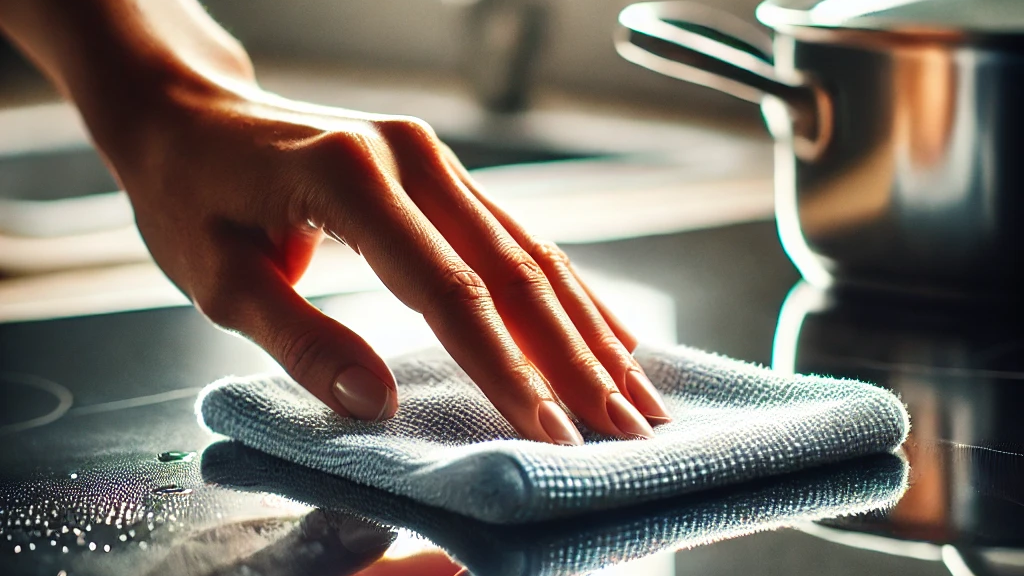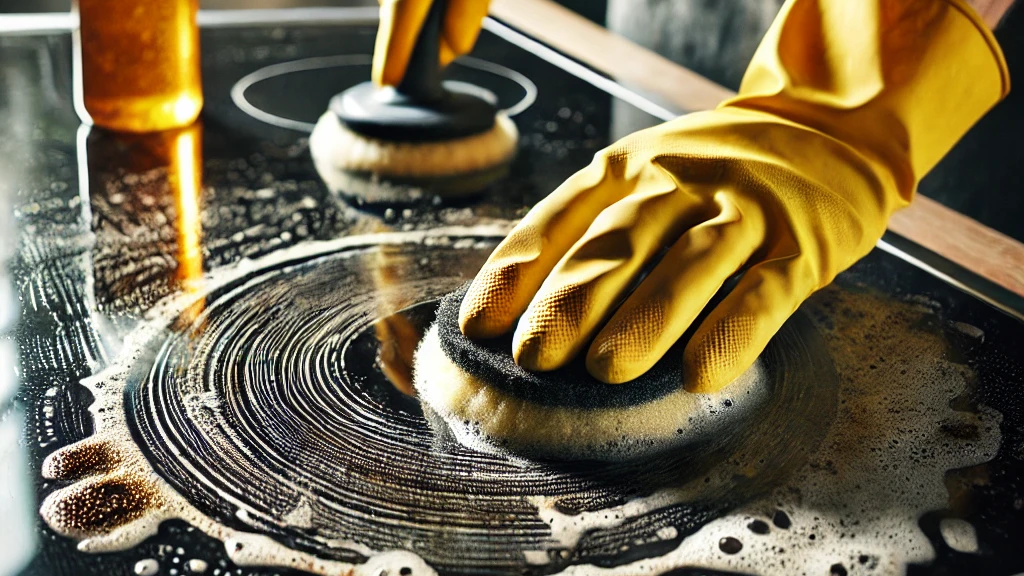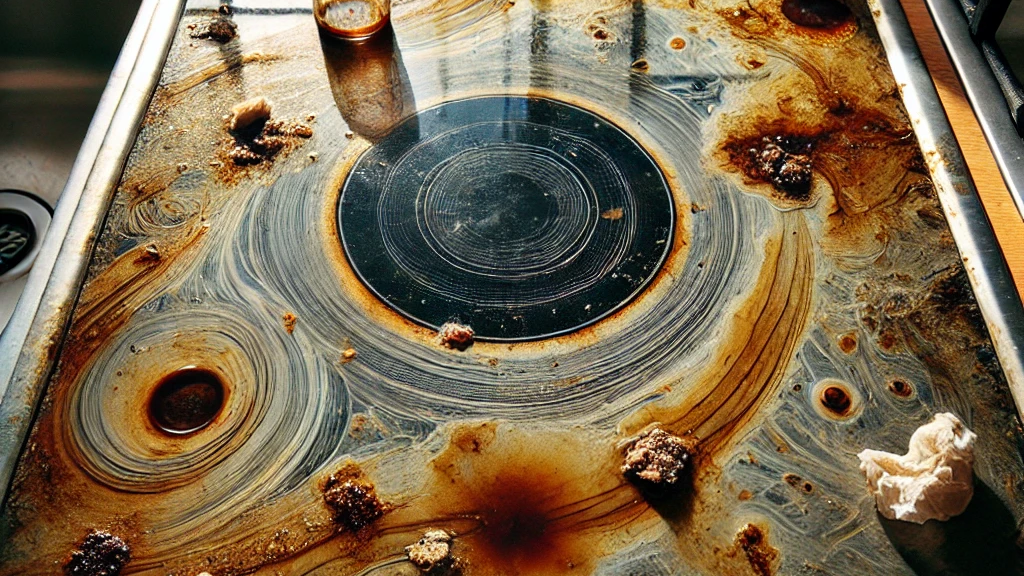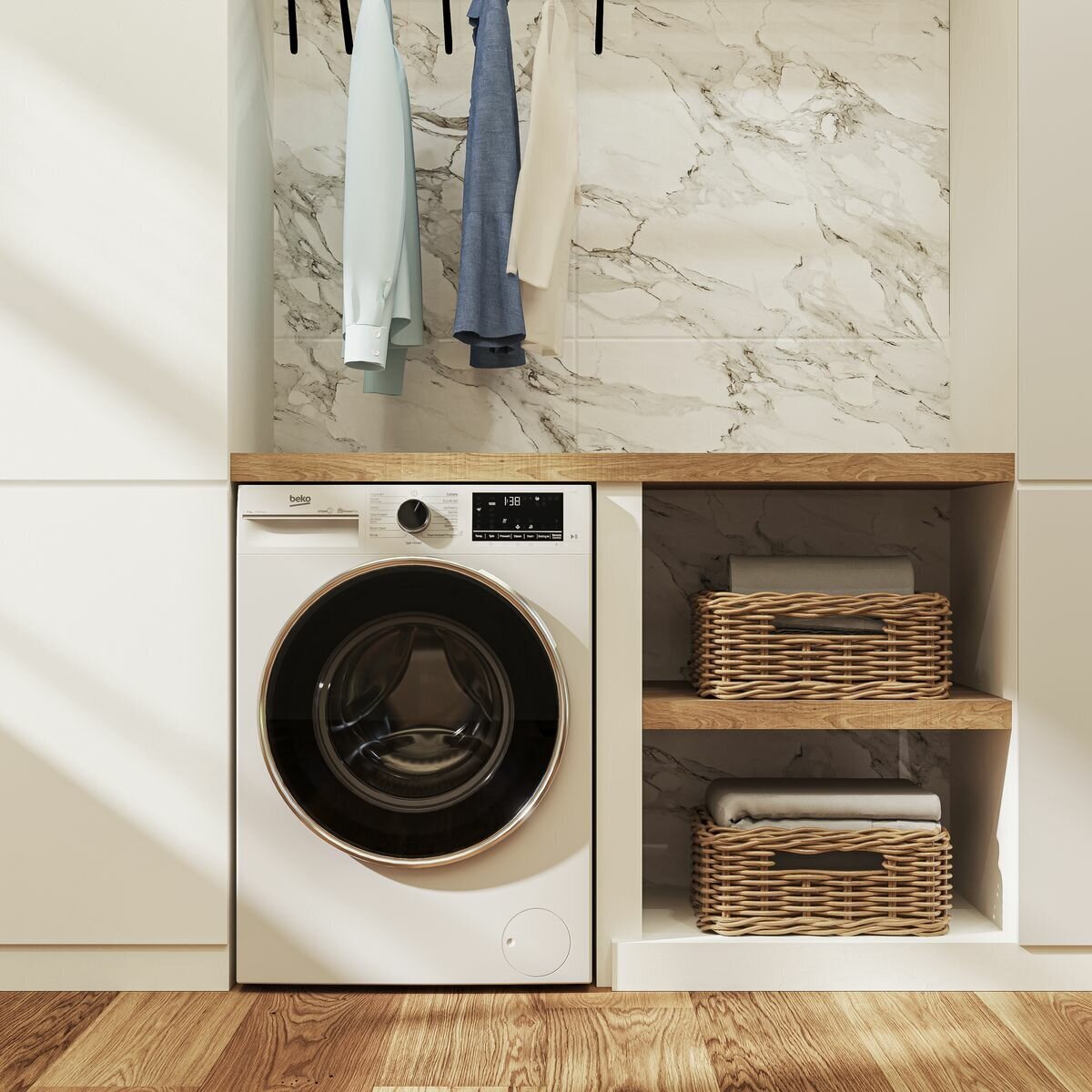
Kitchen
All things cooking, cleaning, chilling and more for the hard-working heart of your home.
KITCHEN | 30 JANUARY, 2025
5 MIN READ
How to Clean a Glass Cooktop and Keep It Clean
Keep your glass cooktop sparkling with our easy cleaning guide!
A glass cooktop gives your kitchen a sleek and modern look, but it also tends to show every smudge, spill, and stain. Whether you're dealing with everyday messes, stubborn burnt-on food, or cloudy streaks, keeping your glass cooktop clean is essential for both its appearance and performance.
In this guide, we’ll walk you through the best ways to clean a glass cooktop, how to remove burnt-on stains, what not to use, and tips to prevent scratches - all in a simple, easy to follow guide.
Why Is It Important to Keep Your Glass Cooktop Clean?
Cleaning your cooktop isn’t just about keeping it looking nice - it actually affects how well it works. Food spills, grease, and burnt-on stains can impact heat distribution, potentially affecting how evenly your food cooks. If left too long, buildup can become incredibly tough to remove.
Plus, a dirty cooktop can be a fire hazard, especially if oil or food residue is left to burn each time you cook. Regular cleaning ensures your kitchen stays safe and your appliance lasts longer.

Wipe On Wipe Off
How to Clean a Glass Cooktop After Everyday Use
The best way to keep your glass cooktop in great condition is to clean it after every use. A quick wipe-down will prevent stains and grime from building up over time.
What You'll Need:
White vinegar or warm water in a spray bottle
Microfiber cloth or soft sponge (we'll allow the use of a clean tea towel)
Dry cloth for buffing
Step-by-Step Cleaning:
Let the cooktop cool down completely – never clean a hot surface!
Spray vinegar or warm water over the entire surface.
Wipe with a microfiber cloth or soft sponge (or tea towel) to remove grease, smudges, and light spills.
Give it another wipe down with a dry (clean) cloth / tea towel for a streak-free shine.
✨ Pro Tip: White vinegar works wonders on grease and fingerprints, leaving your cooktop crystal clear without the need for harsh chemicals.

Cleaning greasy burnt stains on a glass cooktop
How to Remove Burnt-On Stains from a Glass Cooktop
We’ve all been there - a pot boils over, or food spills while cooking, and suddenly there’s a burnt-on stain that won’t budge. But don’t worry! With the right approach, you can lift stubborn stains without damaging your cooktop.
What You'll Need:
Baking soda
White vinegar
Warm, damp cloth or towel
Soft sponge
Plastic scraper (optional for tougher stains)
Step-by-Step Cleaning:
Sprinkle baking soda generously over the burnt area.
Spray white vinegar on top and let it fizz-this helps break down burnt food.
Dampen a soft cloth or towel with warm water and place it over the area.
Let it sit for 15–20 minutes to loosen the residue.
Wipe away with a soft sponge. If needed, use a plastic scraper carefully to help scrub and scrape away stubborn spots.
💡 Why This Works: The baking soda and vinegar combination naturally lifts tough stains without scratching the glass.
How to Get Rid of Brown or White Stains on a Glass Cooktop
Over time, you might notice brown stains (burnt food or grease) or white streaks (mineral deposits or cleaning residue). Here’s how to tackle them:

A very dirty glass cooktop in need of some serious cleaning
Brown Stains (Grease or Burn Marks)
1. Use vinegar and dish soap : Mix equal parts white vinegar and warm water, with a few drops of dish soap.
2. Apply to the stain and gently scrub with a microfiber cloth.
3. Rinse with a damp cloth and dry for a streak-free finish.

White Streaks (Mineral Deposits)
White haze or streaks are often caused by water spots or leftover cleaning residue.
1. Apply lemon juice or vinegar to the area and wipe with a soft cloth.
2. Rinse thoroughly and dry with a clean microfiber cloth.
What NOT to Use on a Glass Cooktop
Your cooktop may be tough, but it’s still prone to scratches and damage if you use the wrong products.
Avoid the following:
🚫 Abrasive scouring pads (steel wool, rough sponges)
🚫 Harsh chemicals (ammonia, oven cleaners, bleach)
🚫 Heavy-duty scrapers or metal utensils
Stick to gentle cleaners like baking soda, vinegar, or commercial cooktop cleaners specifically designed for glass.
How to Prevent Scratches and Keep Your Glass Cooktop Looking New
Once your cooktop is sparkling clean, you’ll want to keep it that way!
Follow these simple tips to prevent damage:
✅ Lift pots and pans instead of dragging them to avoid scratches.
✅ Use flat-bottomed cookware to ensure even heating and prevent marks.
✅ Clean up spills as soon as the surface cools to prevent burnt-on stains.
✅ Do a deep clean once a week to keep your cooktop looking brand new.
💡 Bonus Tip: A small amount of ceramic cooktop cleaner buffed in with a microfiber cloth can create a protective barrier, making future cleaning easier.
How Often Should You Clean Your Glass Cooktop?
After every use: Wipe down with vinegar or warm water to remove grease and streaks.
Once a week: Do a deeper clean with baking soda and vinegar to tackle stains.
As needed: Remove burnt-on food or tougher grime using the methods above.
Keeping up with regular maintenance will save you time and effort in the long run.

With over a decade of hands-on experience with the latest in home appliances, Brad brings a wealth of product knowledge and industry expertise to the table. He also brings a lot of impassioned opinions on shows and movies worth watching, who offers the best coffee in the local area and what kind of tech you absolutely MUST have in your home.
Latest Articles
LAUNDRY
9 DECEMBER 2025
10 of the most popular washer-dryer combos in Australia 2025
What space-saving laundry combos are Aussies buying this year?
HOME LIVING+
9 DECEMBER 2025
The best of the best: Our most popular appliances in 2025
Popular picks for the kitchen, laundry and home.
HOME LIVING+
9 DECEMBER 2025
Buying a Beko – What customers think
A lower price point and longer warranty aren't this brand's only strong points.
LAUNDRY
9 DECEMBER 2025
10 of the most popular top load washing machines in Australia 2025
Prefer a top loader but not sure which to pick? Let us help
More Like This
HOME LIVING+
9 DECEMBER 2025
Buying a Beko – What customers think
A lower price point and longer warranty aren't this brand's only strong points.
LAUNDRY
9 DECEMBER 2025
10 of the most popular top load washing machines in Australia 2025
Prefer a top loader but not sure which to pick? Let us help
HOME LIVING+
9 DECEMBER 2025
The best of the best: Our most popular appliances in 2025
Popular picks for the kitchen, laundry and home.



